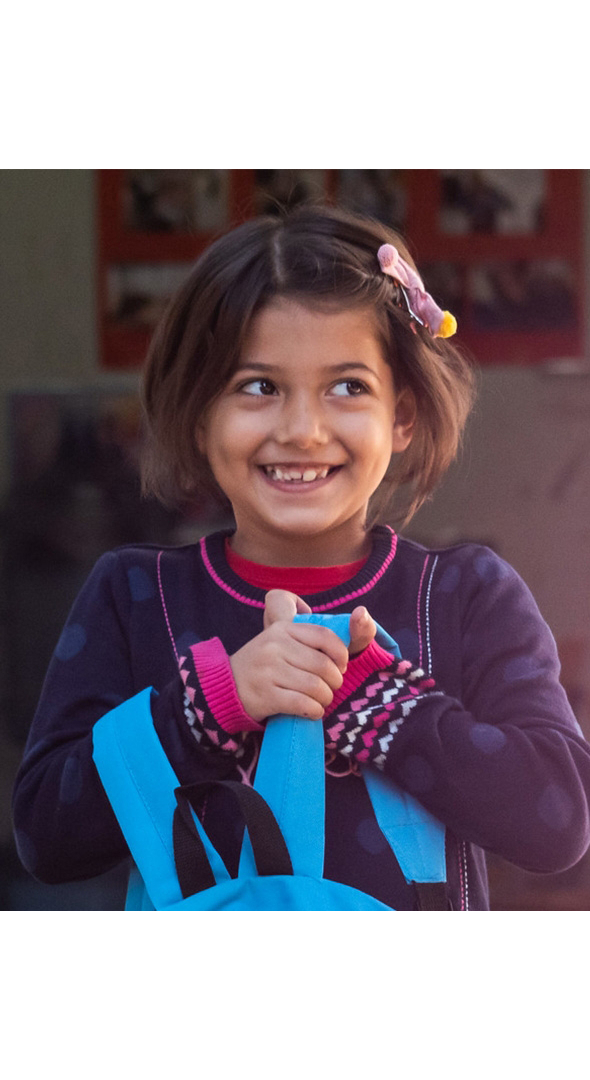Hong Kong Committee for UNICEF allocated HK$1,000,000 to the drought emergency in Guizhou and Yunnan.
2010-04-01
1 April 2010
Severe drought is affecting million lives in China.
Hong Kong Committee for UNICEF allocated HK$1,000,000 to the drought emergency in Guizhou and Yunnan.
Hong Kong (1 April 2010) - Millions of people in southwestern China’s Yunnan, Guizhou, Guangxi, Sichuan and Chongqing Provinces face drinking water shortages, as the most severe drought in a century dries up rivers and threatens vast farmlands. The Hong Kong Committee for UNICEF immediately allocated HK$1,000,000 to the drought emergency in Yunnan and Guizhou, providing emergency assistance to hardest-hit areas.
According to the Ministry of Civil Affairs, the drought has left 18 million residents in the region with drinking water shortages. Many of the communities most severely affected by the drought live in remote, mountainous villages in poor, economically underdeveloped regions. The drought has already led to millions of dollars of direct agricultural economic loss, while 12 million head of livestock are vulnerable because of the water shortage. With the spring planting season soon to begin, but limited rainfall predicted through April/May 2010, the situation of children and women could be further at risk, as food security and livelihood suffer.
UNICEF response:
UNICEF has been in discussions with the Ministry of Water Resources, the Ministry of Health and the All-China Women’s Federation. UNICEF will respond to the drought emergency in the following five oad areas of intervention:
1. Water Provision
UNICEF will support the transportation of water to remote communities and boarding schools to ensure that children and women have access to clean drinking water. Possible water transportation modalities include water tankering and small-scale transport options, which may be necessary because of road conditions in the most remote and vulnerable communities.
2. Water Storage
Improvements to water storage in communities and boarding schools, to ensure that available water is used optimally and distributing water tanks, bladders, and household water containers.
3. Water Treatment
Water treatment options to treat water from unclean sources. In the aftermath of the Sichuan earthquake, for example, UNICEF provided sodium dichloroisocyanurate tablets (Aquatabs) and sodium hypochlorite (bleaching powder) for drinking water treatment.
4. Water Conservation
Improvements to water conservation, such as the provision of tubs and buckets to capture used water for reuse.
5. Improved Hygiene
Improvements to hygiene, such as the provision of hand gel and other personal hygiene items that can be used in the absence of water.
Throughout the response to the drought emergency, UNICEF will work with counterparts to provide ongoing support to educate communities on how to manage water and maintain health in drought. UNICEF will also work with counterparts to provide technical training to villagers and schools on the use of supplies.
# # #
About UNICEF
UNICEF is on the ground in over 150 countries and territories to help children survive and thrive, from early childhood through adolescence. The world’s largest provider of vaccines for developing countries, UNICEF supports child health and nutrition, good water and sanitation, quality basic education for all boys and girls, and the protection of children from violence, exploitation, and AIDS. UNICEF is funded entirely by the voluntary contributions of individuals, businesses, foundations and governments.
Donation to Southwestern Drought 1. Donation Hotline : 2833 6139 2. Direct Bank- in
|
3. Cheque: Payable to “Hong Kong Committee for UNICEF” (Please send us the cheque with personal details with remark “Drought” at the back and send to “Hong Kong Committee for UNICEF, 3/F, 60 Blue Pool Road, Happy Valley, Hong Kong.”)









